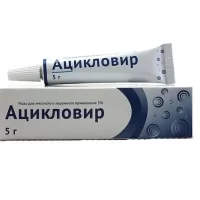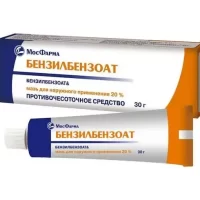Description
Acyclovir Pharmacodynamics
Acyclovir is active in vitro against Herpes simplex 1 and 2 types, Varicella zoster virus, Epstein-Barr virus and cytomegaloviruses. Thymidine kinase of virus-infected cells actively converts acyclovir into acyclovir mono-, di- and triphosphate through a series of reactions. The latter interacts with the viral DNA polymerase and is incorporated into the DNA that is synthesized for new viruses. Thus, “defective” viral DNA is formed, which leads to suppression of replication of new generations of viruses.
Indications
Skin infections caused by Herpes simplex virus types 1 and 2, including herpes lip.
Contraindications
Hypersensitivity to acyclovir and other components of the drug.
With caution:
Pregnancy, period of breastfeeding.
Pregnancy and lactation:
In pregnancy and during breastfeeding is used only if the estimated benefit to the mother exceeds the potential risk to the fetus and child.
Dosage and administration method.
- Externally.
- Adults. The drug is applied 5 times a day (every 4 hours) a thin layer on the affected and adjacent skin. The cream is applied either with a cotton swab or clean hands to avoid further infection of the affected areas. It is important to start treatment as soon as possible at the beginning of the disease, preferably during the prodromal period.
- Therapy should be continued until the blisters have crusted over, or until they are completely healed.
- Duration of therapy is on average 5 days and should not exceed 10 days.




